site search
online catalog
PROJECTILE STRUCK CS RIFLE SHILOH!

Hover to zoom

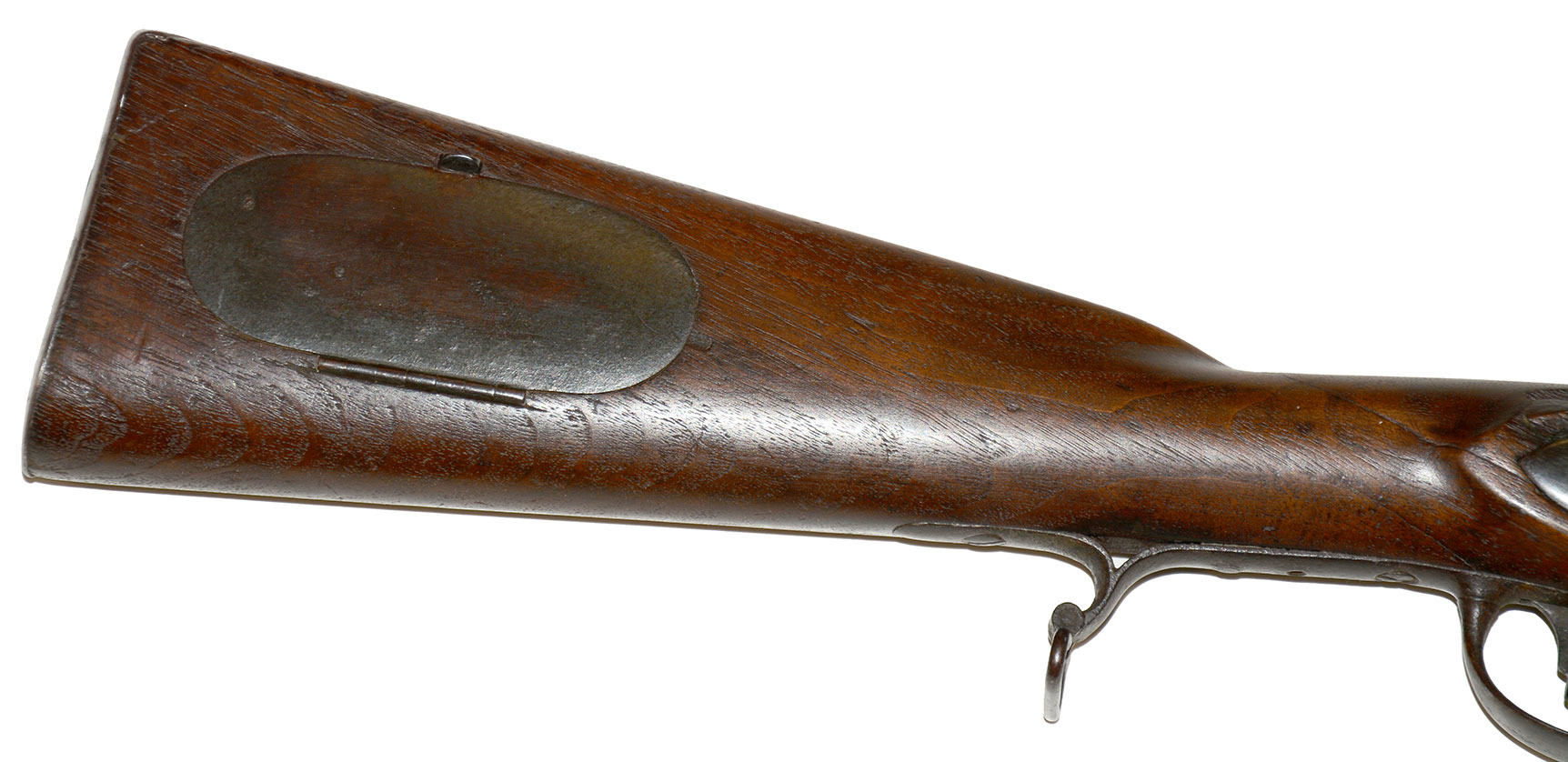
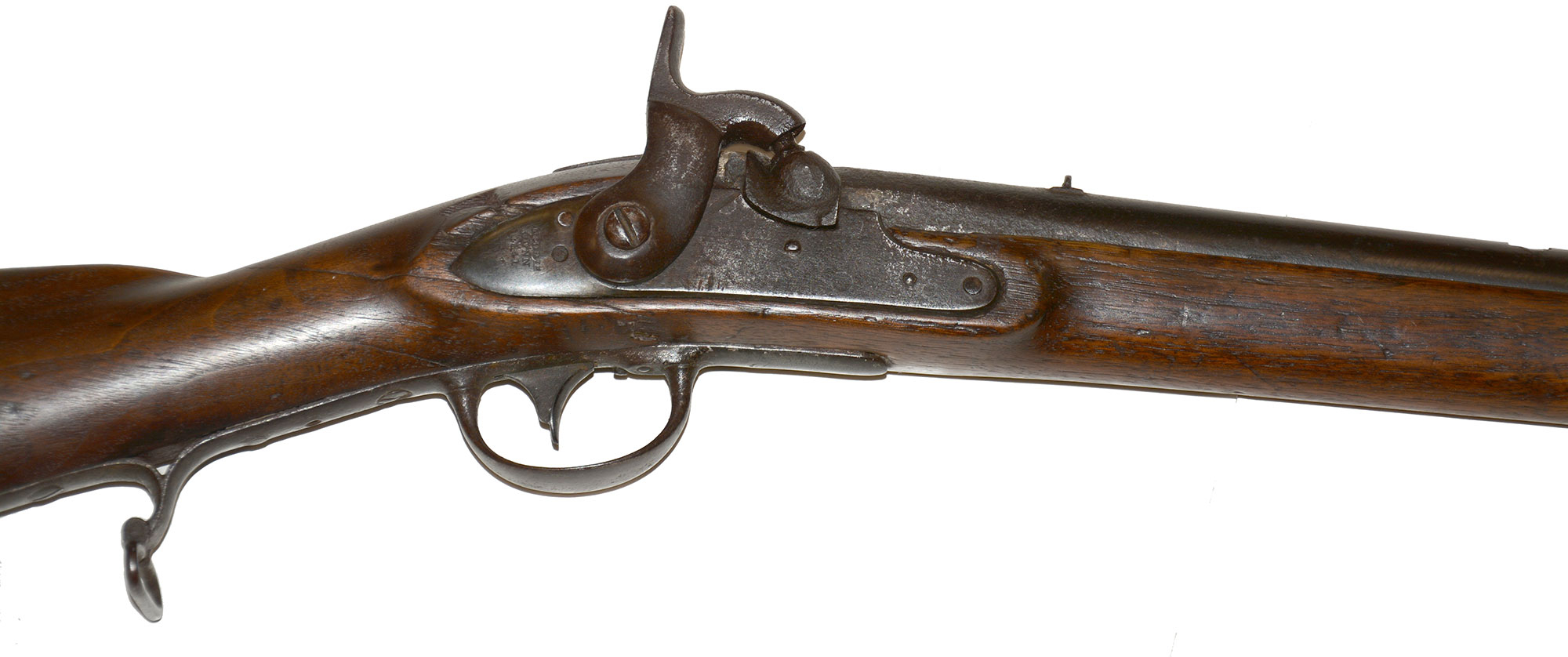

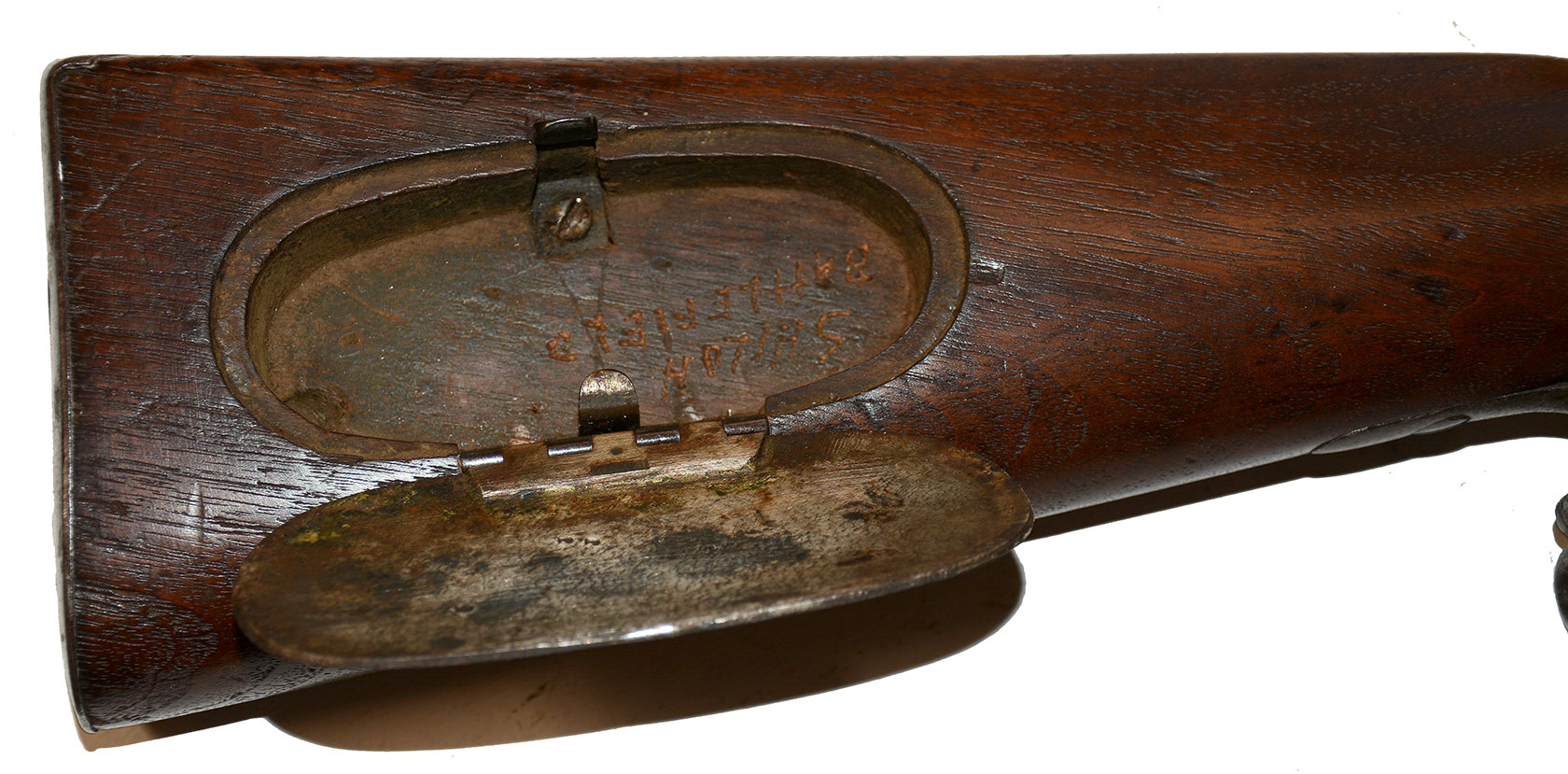
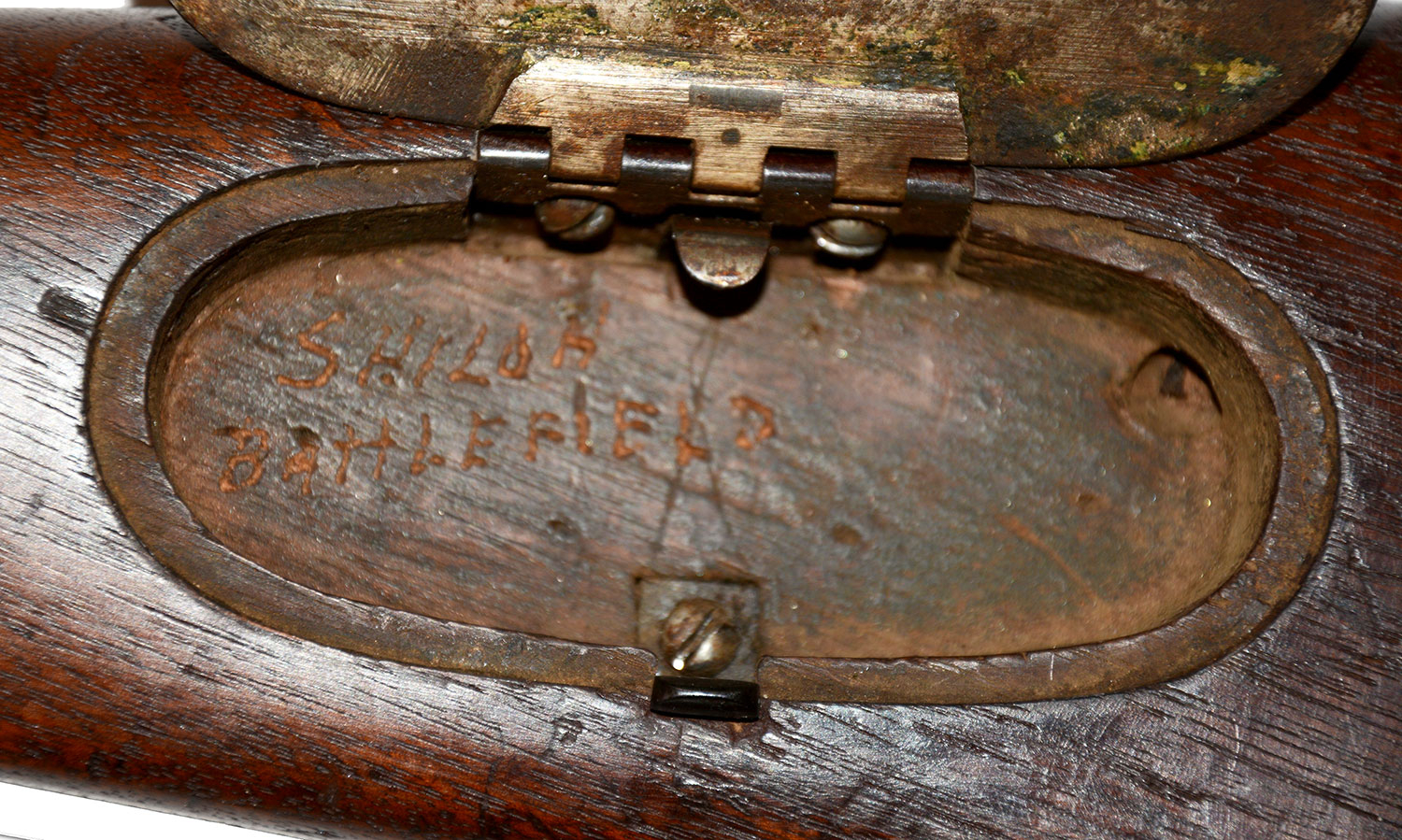
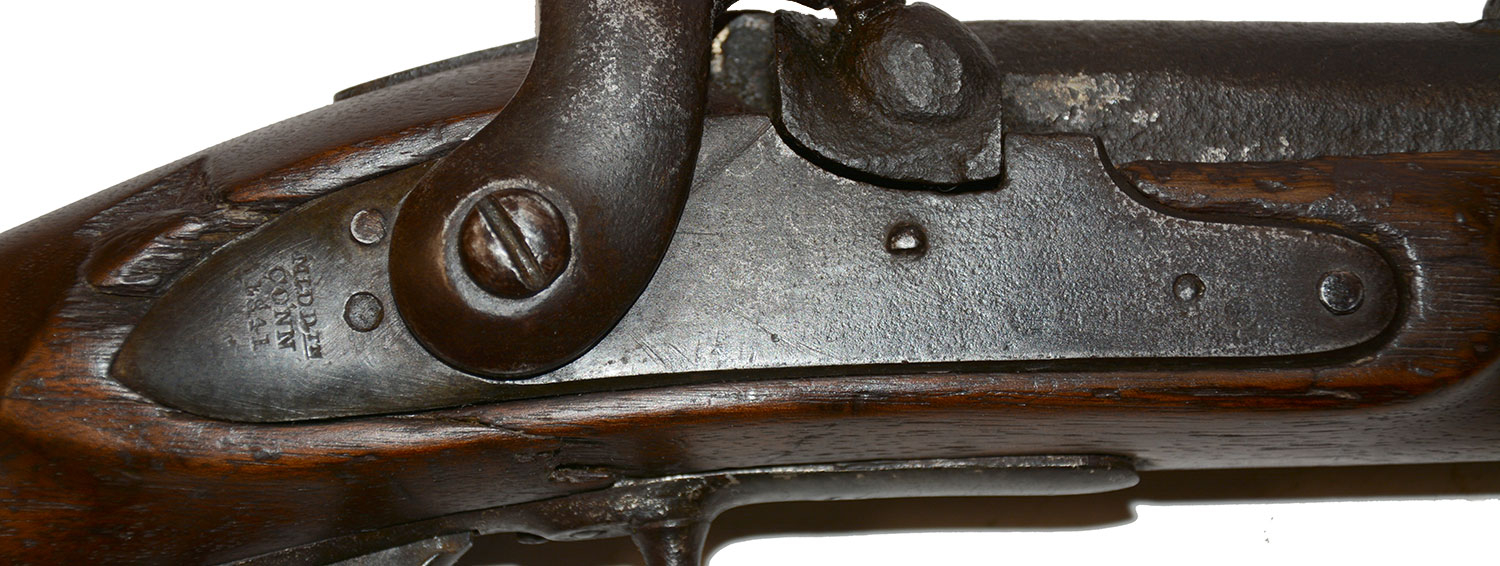
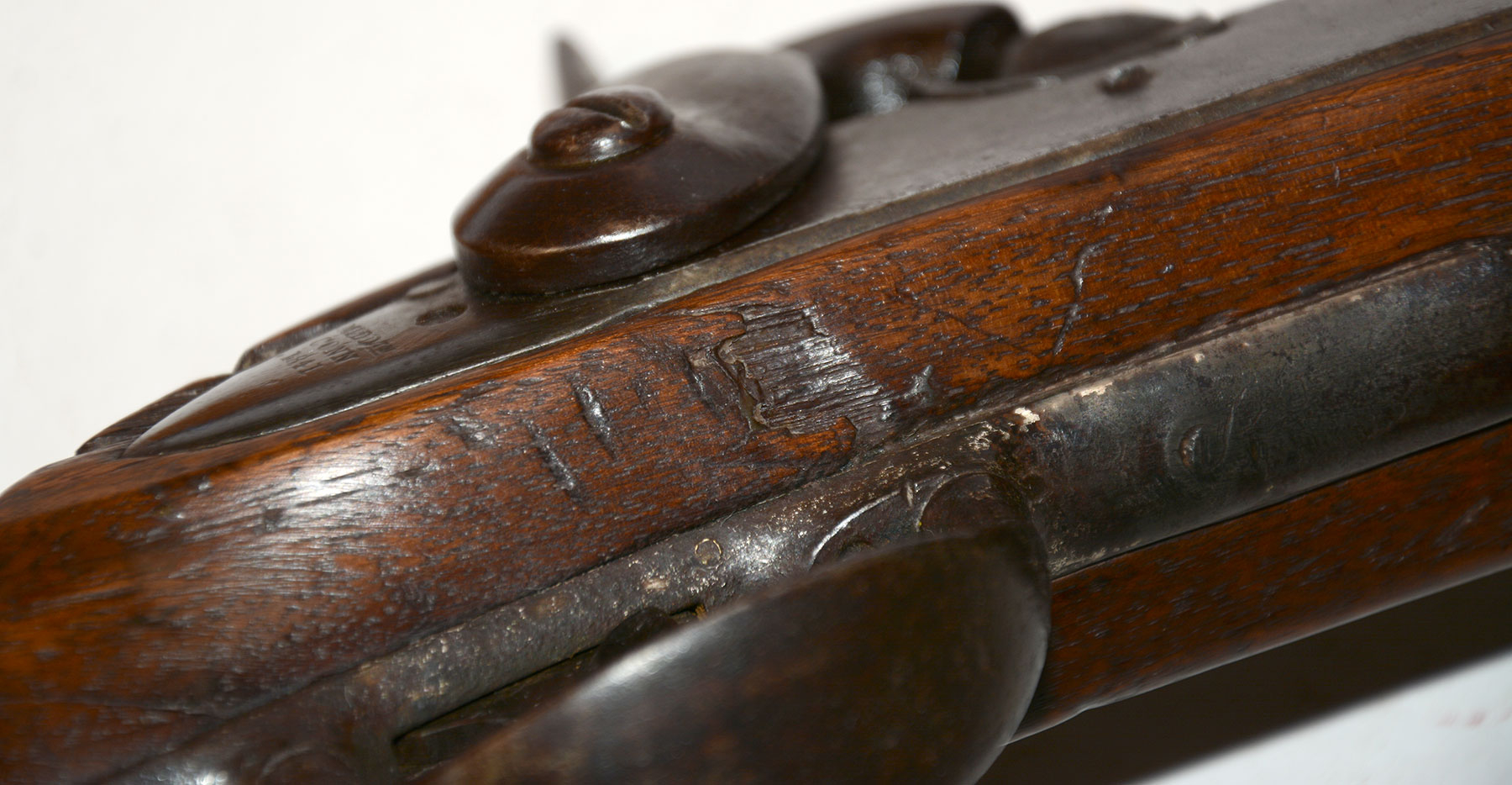

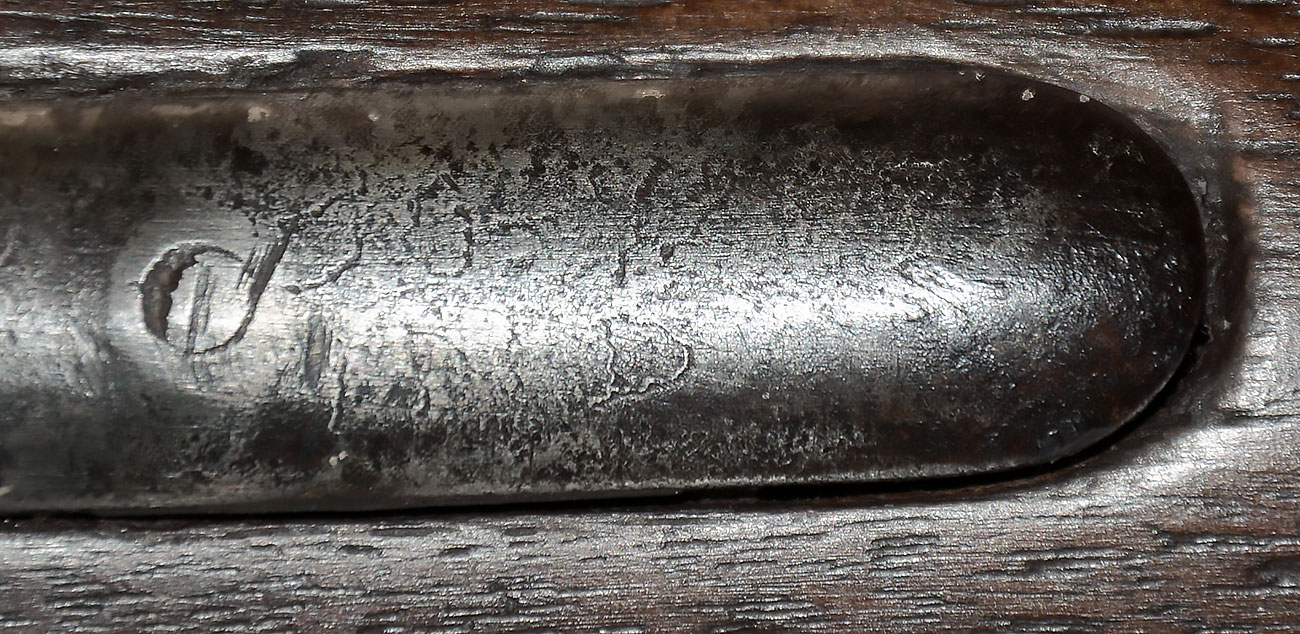
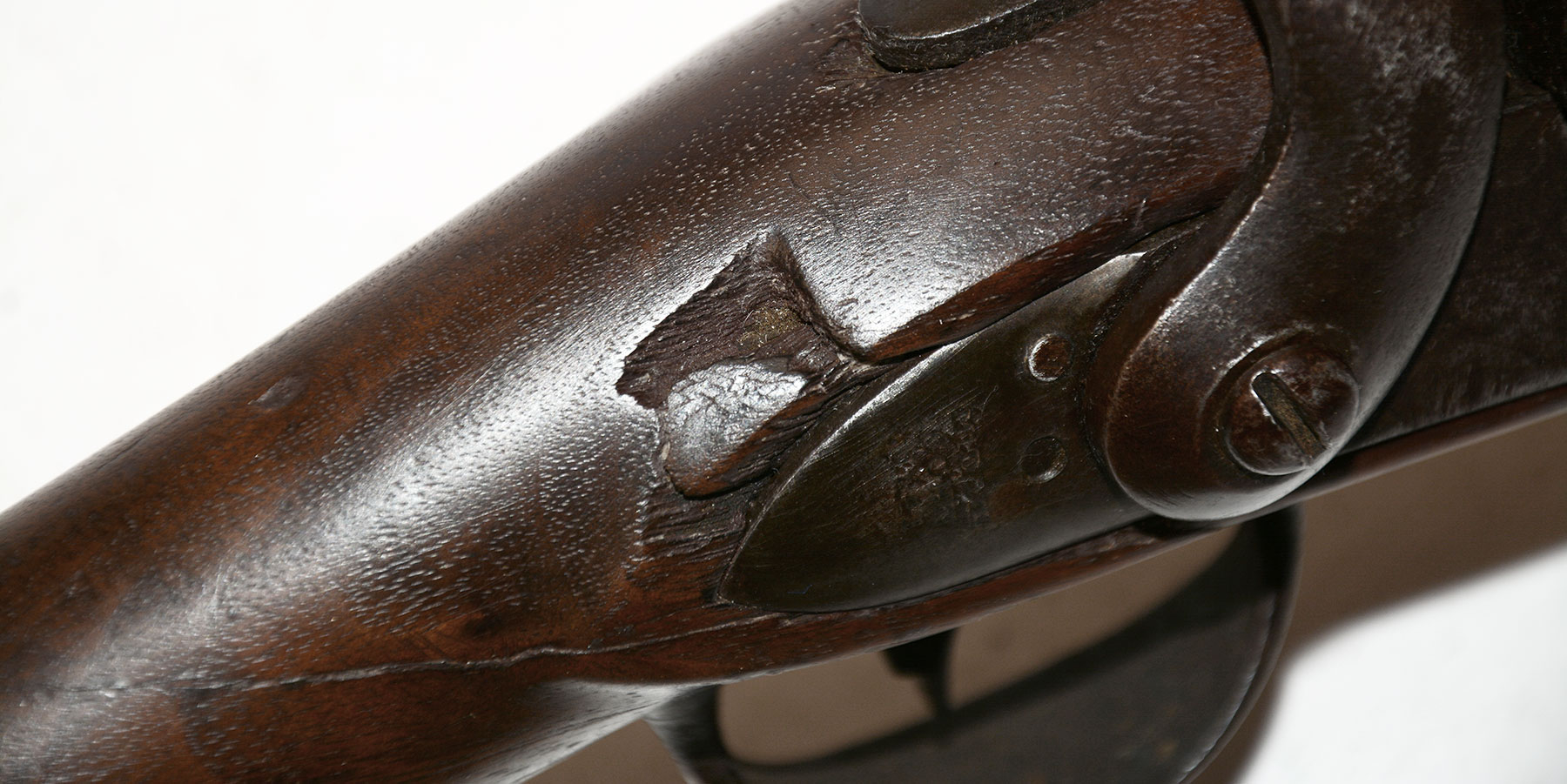
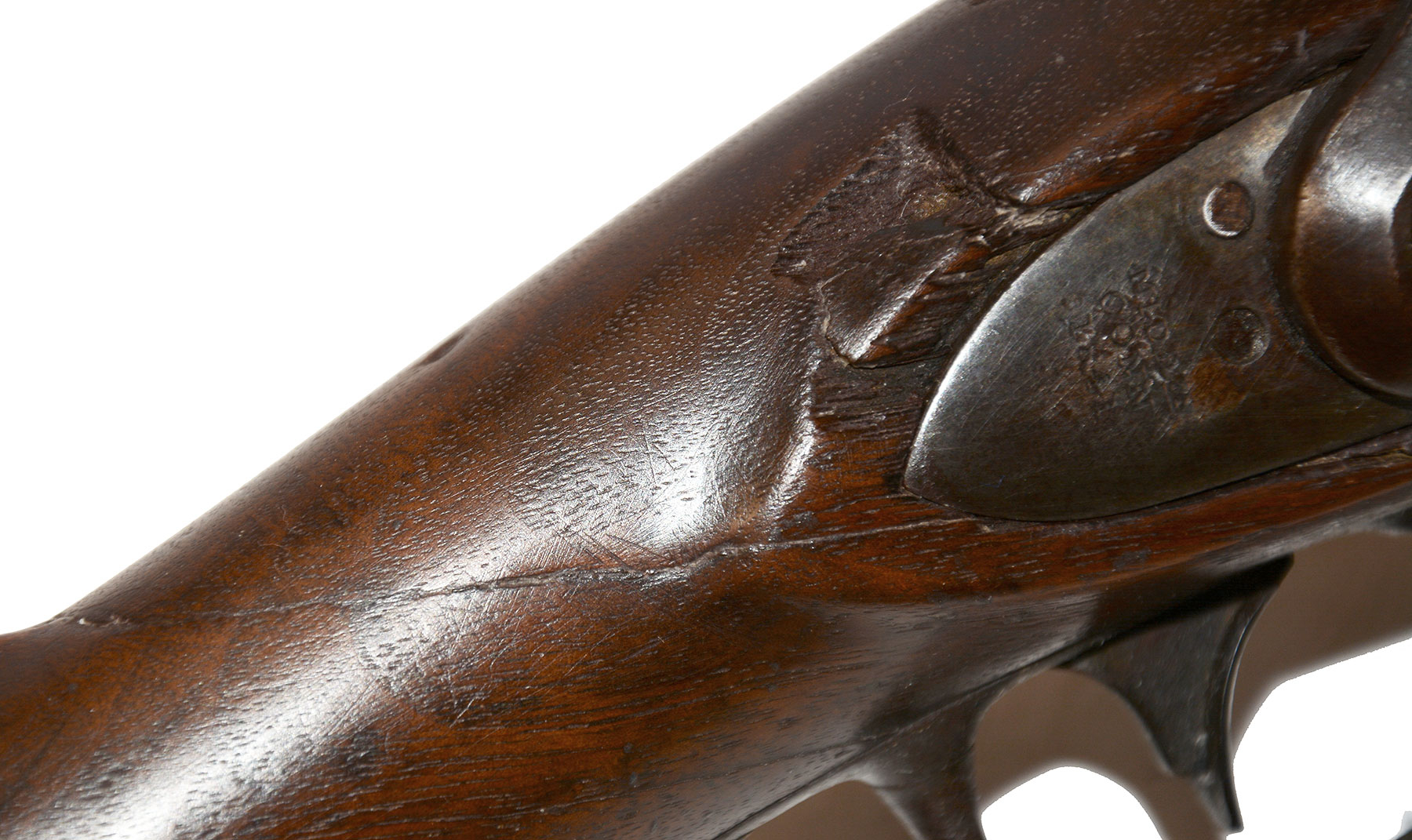
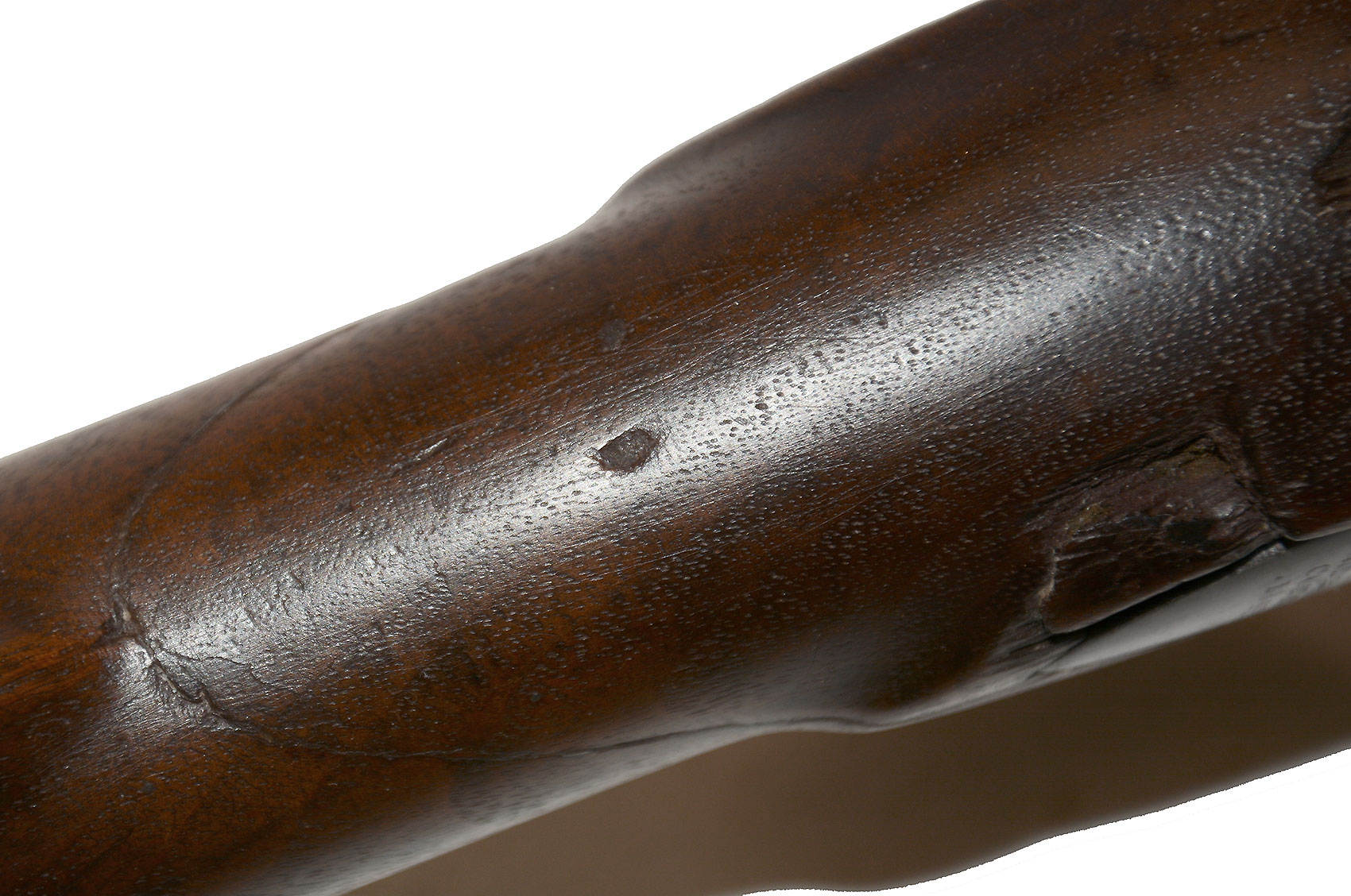
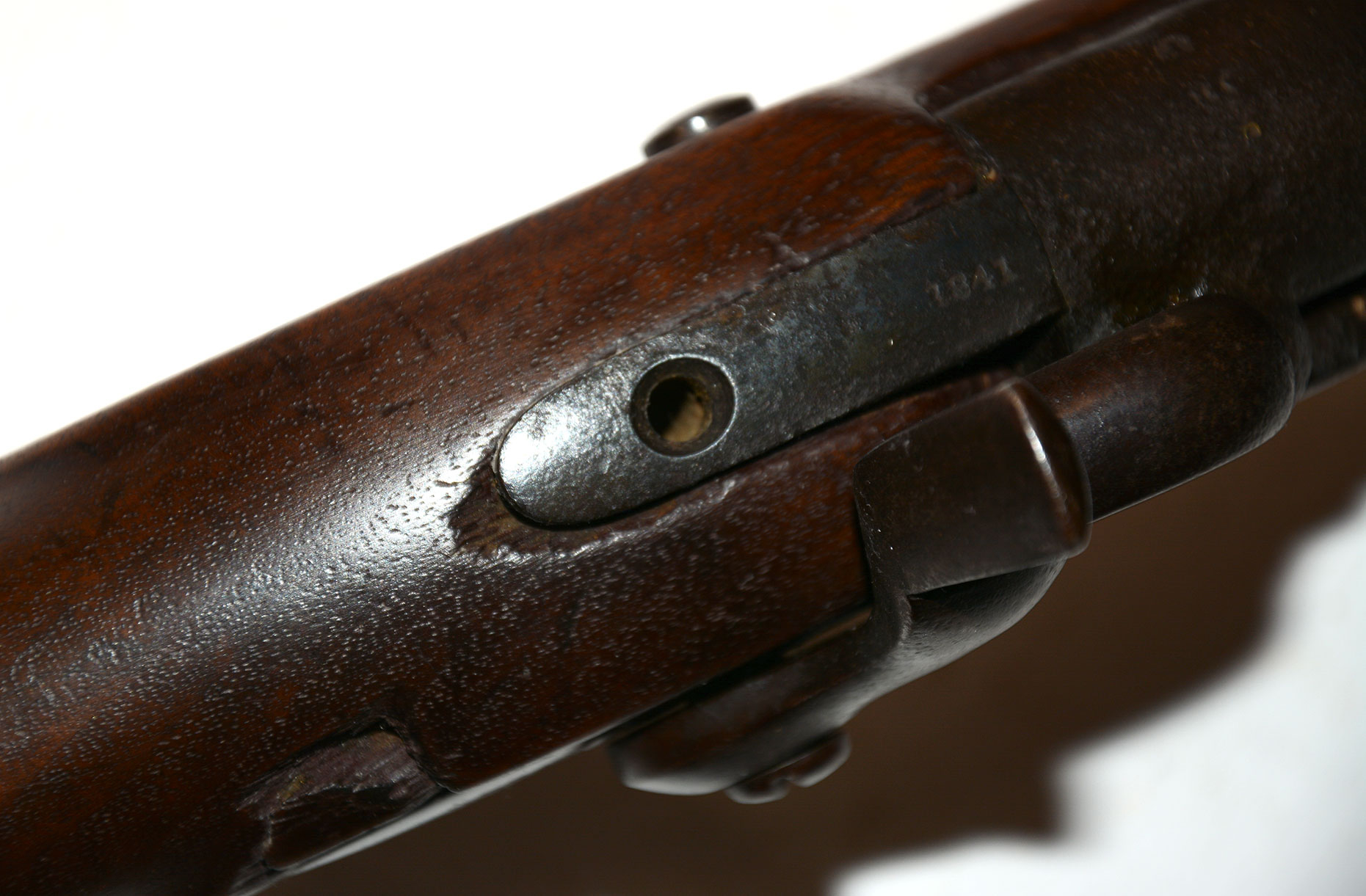
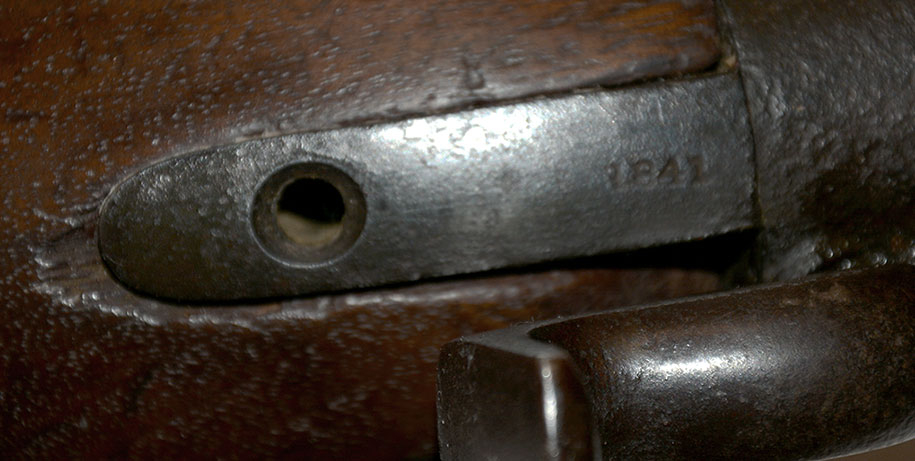
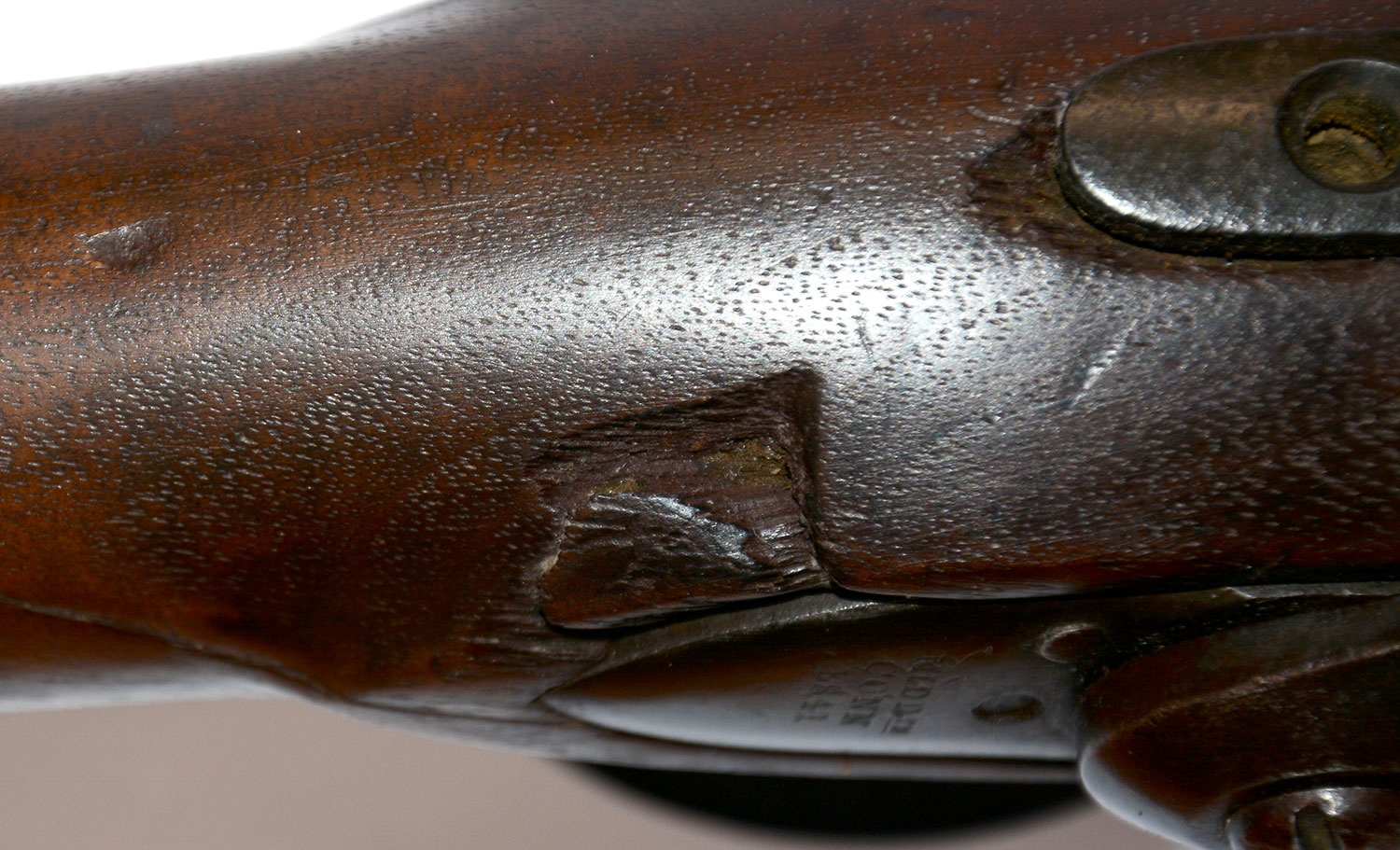

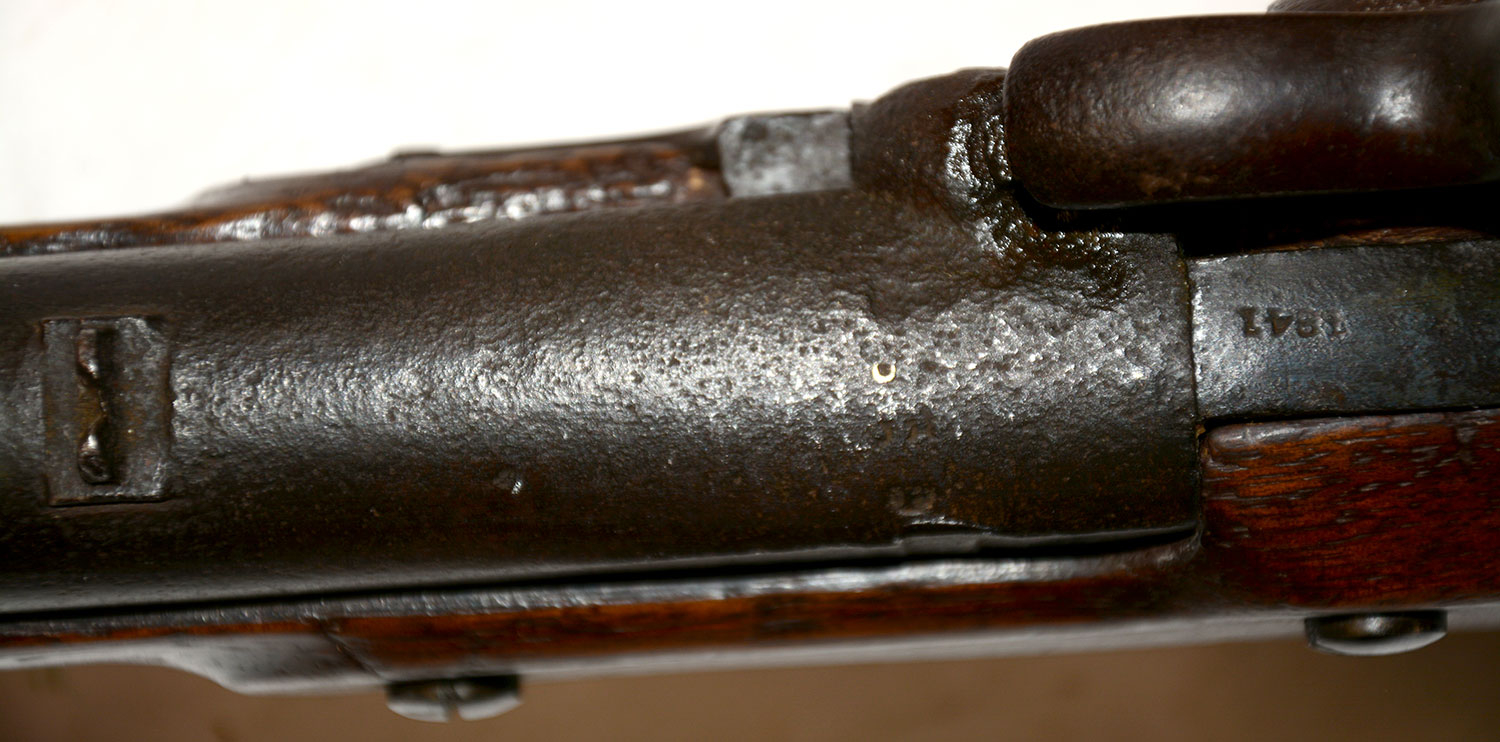
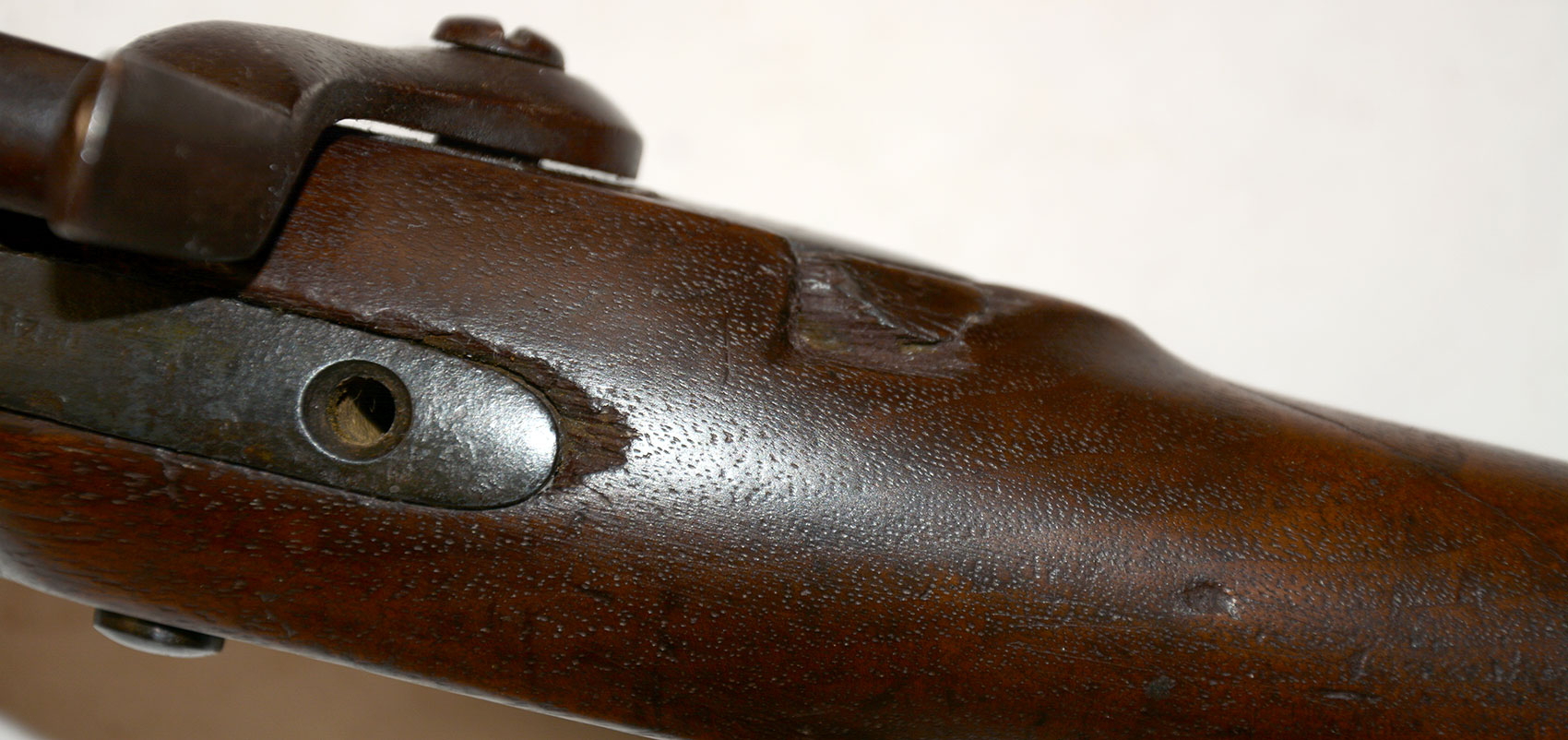
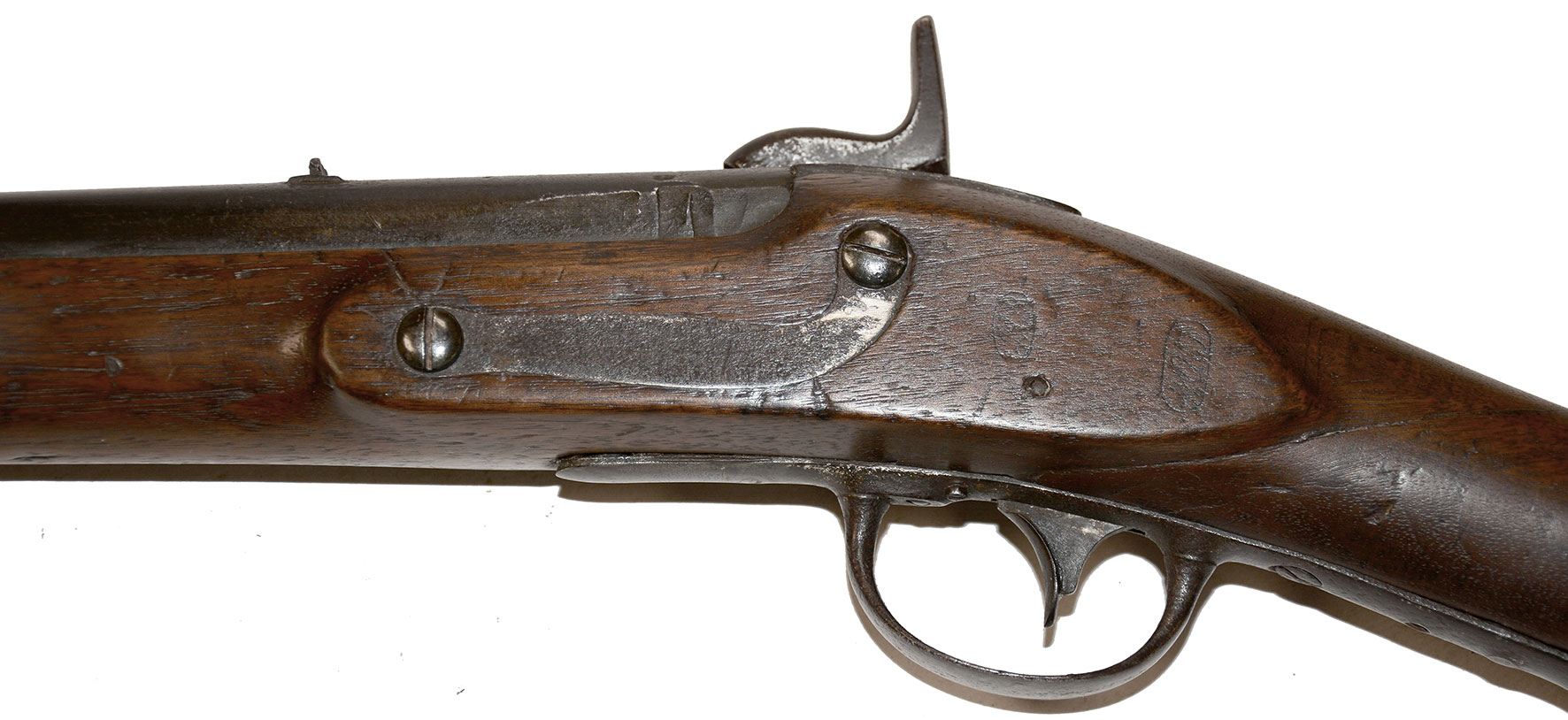
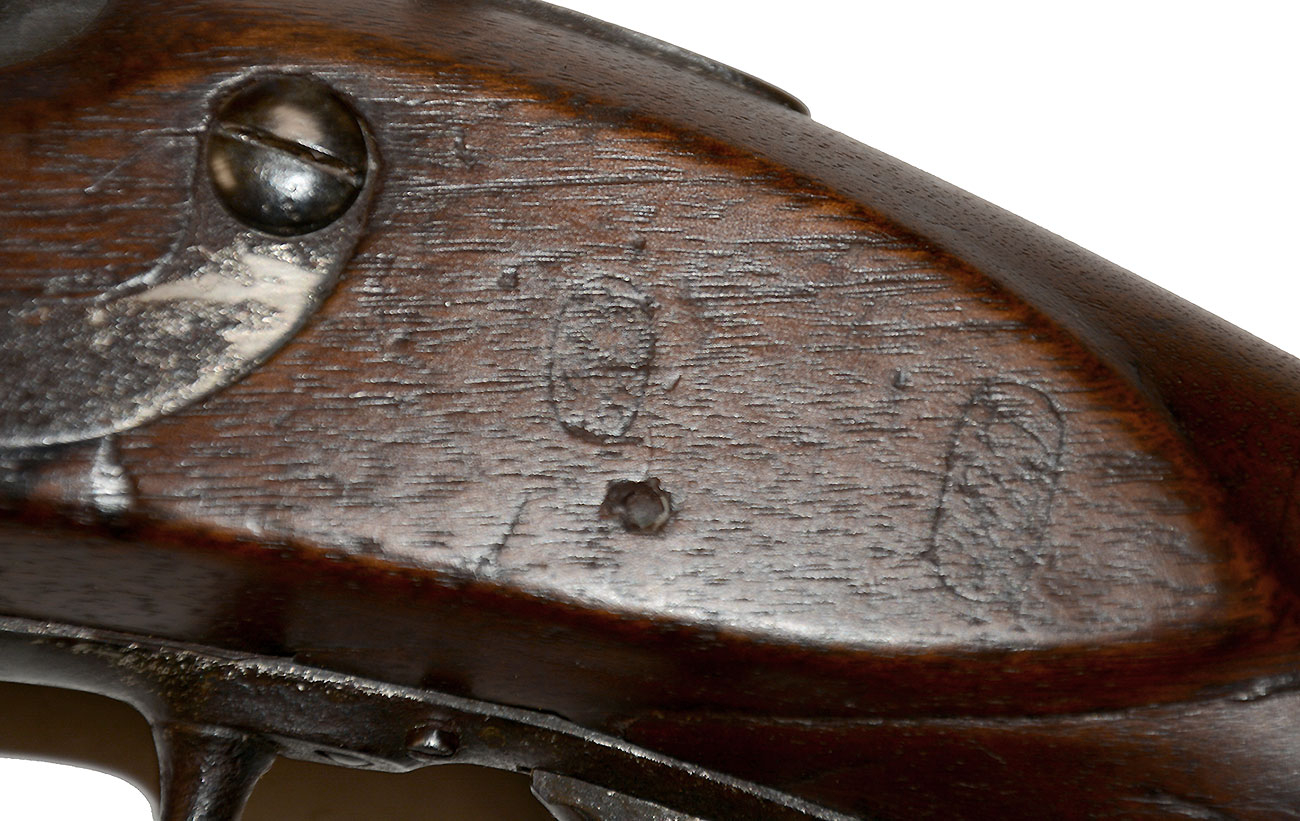
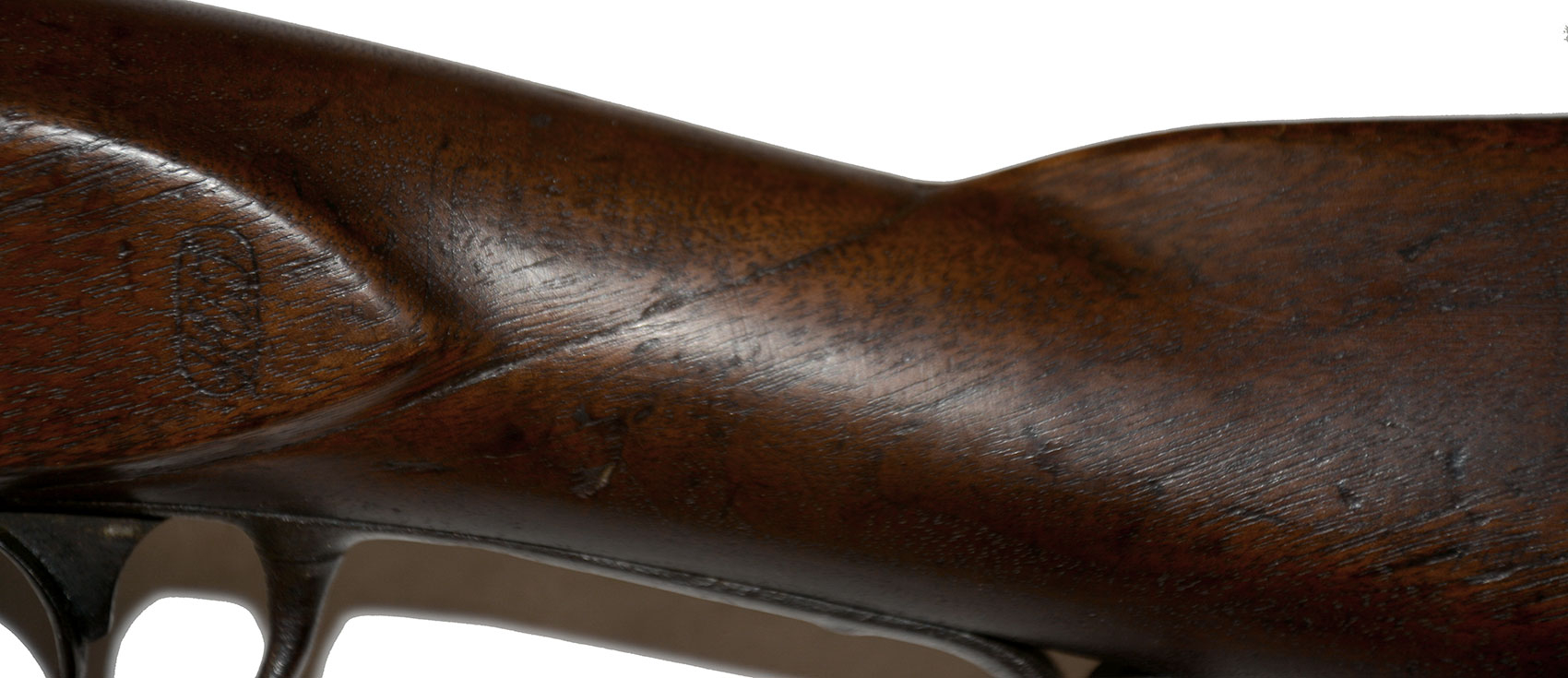
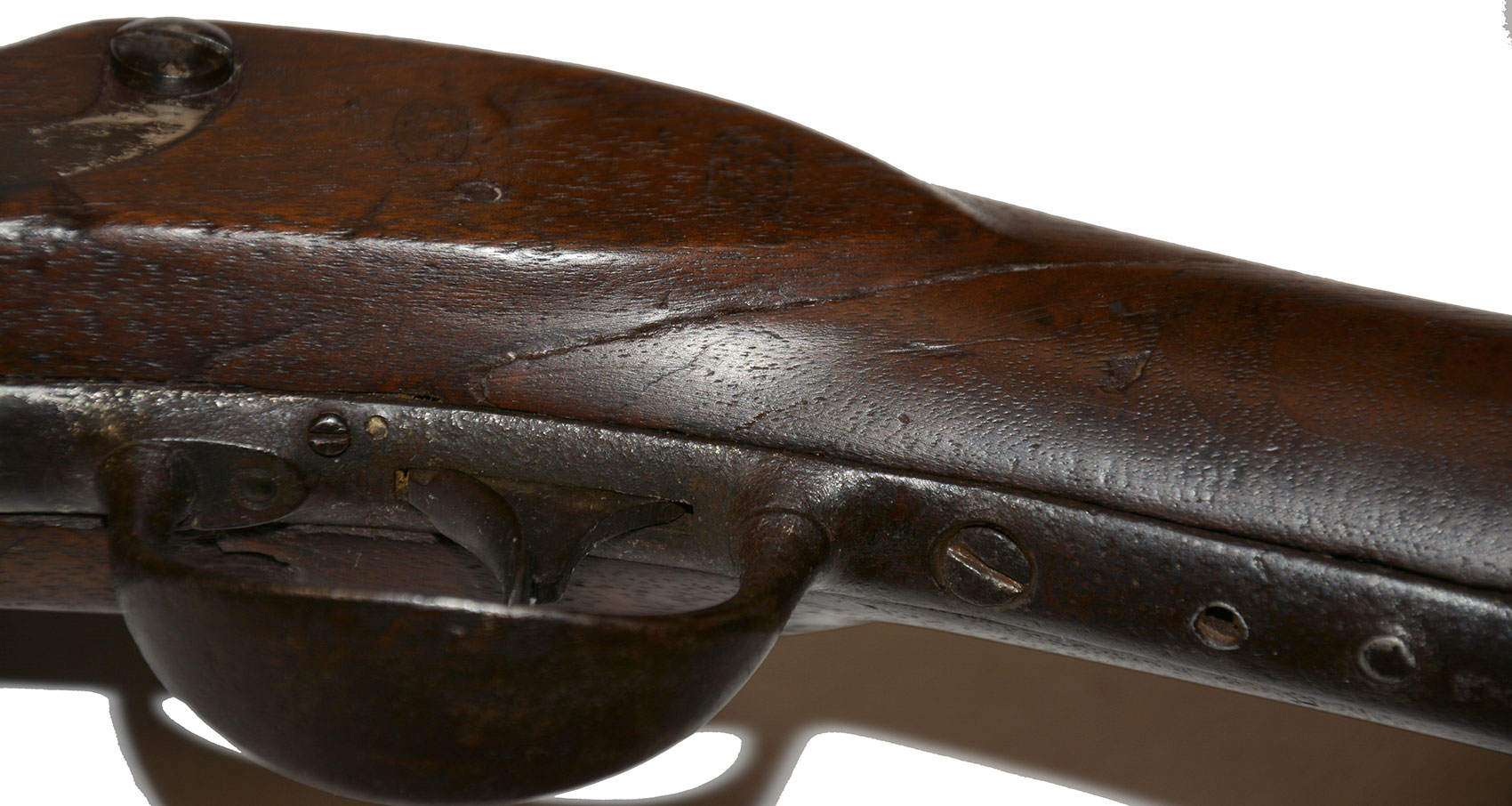
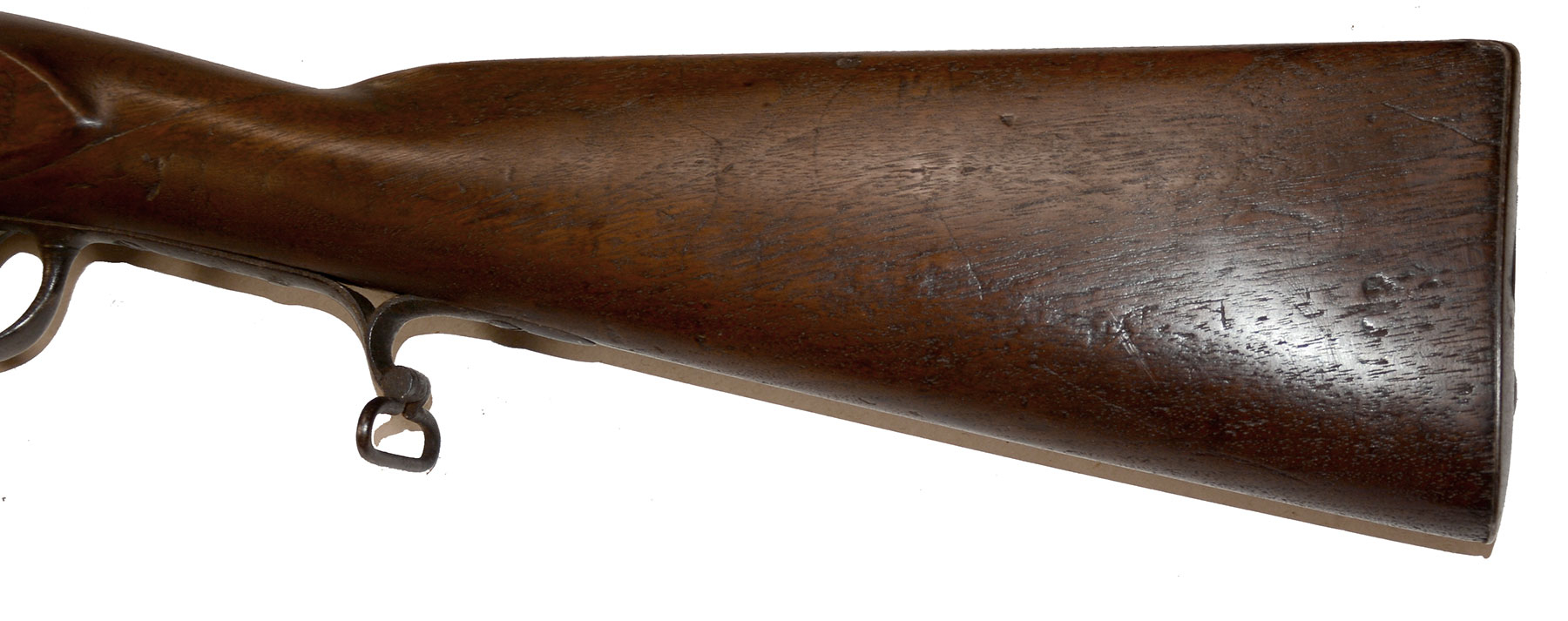


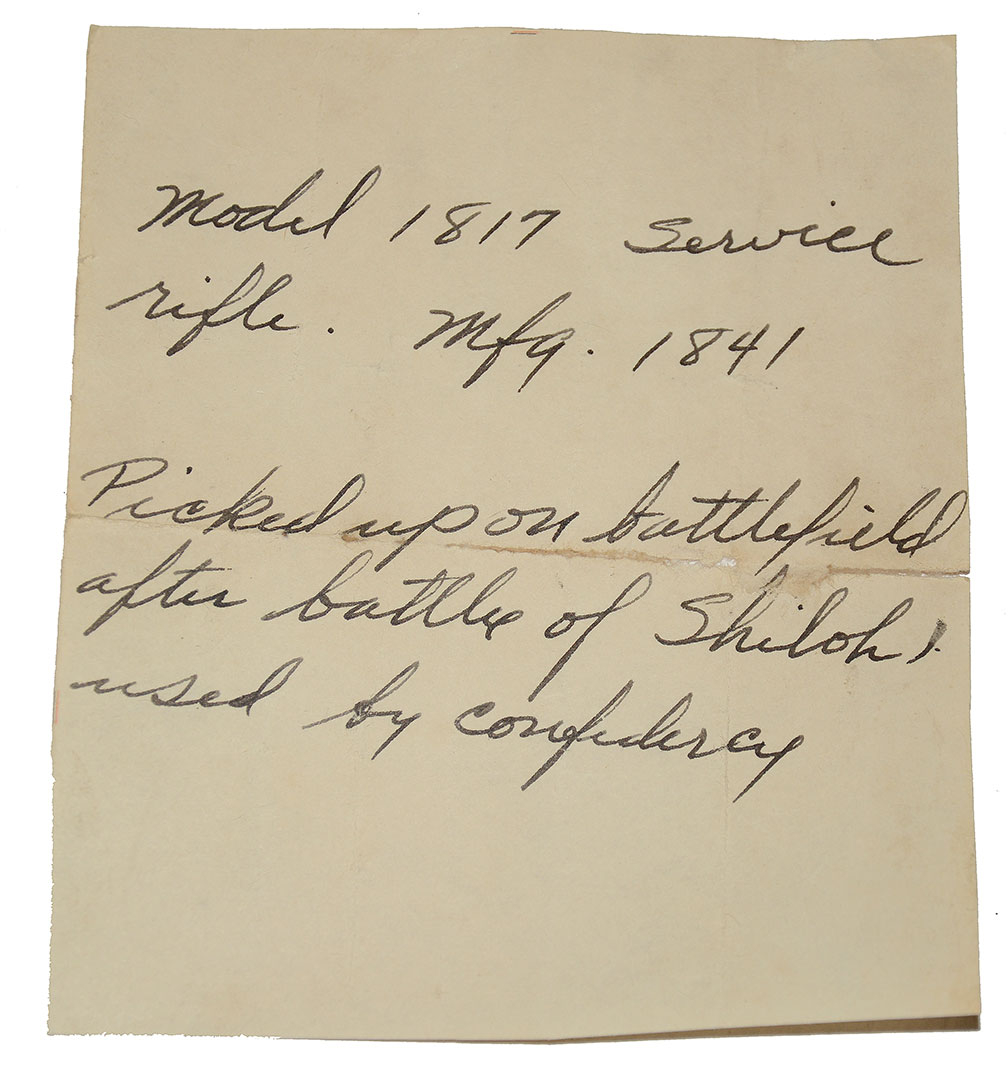
$4,750.00 SOLD
Quantity Available: None
Item Code: 88-166
This is an historic museum worthy example of a Confederate altered US Model 1817 Common Rifle. The rifle started life as a Nathan Starr second contract US flintlock rifle and was converted to percussion by Confederate authorities. The term Common Rifle actually dates to the period of use and was meant to differentiate between this traditional muzzle loading rifle and the Hall’s Patent Breech Loading rifle produced at Harper’s Ferry and by Simeon North. The Common Rifle was only produced by contractors, and not at the National Armories. This gun was part of a second contract let to Starr in 1840 for 6,000 rifles.
This particular common rifle was produced in 1841, and that date is found on the rear of the lock plate as well as on the barrel tang. The gun is marked vertically in three lines behind the hammer: MIDDTN. CONN. 1841. Forward of the hammer it was, before Confederate modification, marked N. STARR & SONS. in an arc over a sunburst motif with a five-pointed star, over US. The breech is marked US. JCB. P. with the P in a sunken circle. The barrel tang is dated 1841. The barrel is rifled in .54 caliber it is 36 and 1/2 inches long and was never designed to take a bayonet. The iron butt plate is marked US on the top of the tang. Two well defined cartouches are located on the flat opposite the lock.
Albert Sidney Johnston wrote Jefferson Davis in late 1861 and pleaded: "We need more guns, not more men!". This desperate plea resulted in older arms of every description and ignition system being sent to gunsmiths and armories all across the South. Among those re- working and upgrading existing older arms for the, then. Army of Mississippi were: Christian Kreutner of Alabama, Holly Springs Armory, Memphis Arsenal, Columbus Mississippi Arsenal, and Briarfield Armory to name a few.
This weapon was converted from flint to percussion ignition using the "bolster conversion" method The work was done at a Confederate government or state sanctioned facility. The conversion, to the knowledgeable eye, is only southern in technique. The somewhat crude cast cock or hammer has not been crosshatched at the thumb pull point. The Roman numeral "V" is extant in several places, and this is a mating number put on the weapon at a Confederate facility. The front sight is a crude cast Confederate version while the rear sight is an open "Buckhorn" type moved back 4 inches from its original 1841 position. Of interest is the fact that before the conversion and certainly before the spring of 1862 two other sights were used on this weapon! 1/8th inch deep drilled and threaded holes attest to this fact. The weapon shows lots of expected period use with burn loss to the wood behind the bolster and some in front of the lock. The surface on the stock has a wonderful mellow patina. There are letters probably the initials of a soldier lightly carved on the left side of the stock north of the butt. The iron hardware is all original and is encrusted in places with a heavy patina but is not unattractive. The smooth barrel retains nice original lacquer brown mixed with age patina. Pitting is extant at the rear near the bolster. Both sling swivels are in place as is the original threaded ramrod. The mechanics work well.
THE SHILOH WOUND: A shell fragment slammed into the wrist of the rifle. It can readably be identified as a triangular impact crater extending over 1/2 inch in depth. This is just above and to the left of the rear of the lock plate. It caused not only the wrist of the arm to shatter but it also broke and bent the iron trigger guard and caused the barrel tang screw to break off and fly into oblivion (see several attachments). The weapon was picked up by a member of the 30th Indiana Volunteers. "30" over "IND" is very faintly scratched in the front of the trigger guard. The 30th was heavily engaged on April 7, 1862. The soldier who picked up the rifle mended it with 2 screws through the trigger guard; one long screw ran up to stabilize the cleanly fractured wrist remarkably which had very little wood loss or splintering (Back in the day there were no glues readily available to hold that type of damage fast). To accommodate the screws, he tapped 2 small holes in the trigger guard. The Civil War soldier then put a small narrow brass plate inside the trigger guard crack and made it fast with a small screw; the break is virtually invisible to the eye now. Within the past month the rifle was handed to a master restorer who removed the rear most ancient repair screw from the trigger guard that ran up through the wood and clamped the wrist back together with a modern water-soluble adhesive and it looks great. One old "repair" bolt was left in the front of the trigger guard as it was filed flush. This smoothed filing of the screw head makes "30" over "IND" hard to see. The arm recently came "out of the woods" and unexpectedly a century old handwritten note was found in the patch box that read: "Model 1817 Service rifle. mfg. 1841. Picked up on battlefield after battle of Shiloh, used by Confederacy". Additionally, boldly scratched inside the wood of the patch box is "SHILOH BATTLEFIELD". The several attached pictures speak volumes on this Civil War treasure, please study them carefully. [pe] [ph:L]
DISCLAIMER: All firearms are sold as collector's items only - we do not accept responsibility as to the shooting safety or reliability of any antique firearm. All firearms are described as accurately as possible, given the restraints of a catalog listing length. We want satisfied customers & often "under" describe the weapons. Any city or state regulations regarding owning antique firearms are the responsibility of the purchaser. All firearms are "mechanically perfect" unless noted, but again, are NOT warranted as safe to fire!
~~~~~~~~~~~~~~~~~~~~~~~~~~~~~~~~~~~
THIS ITEM, AS WITH ALL OTHER ITEMS AVAILABLE ON OUR WEB SITE,
MAY BE PURCHASED THROUGH OUR LAYAWAY PROGRAM.
FOR OUR POLICIES AND TERMS,
CLICK ON ‘CONTACT US’ AT THE TOP OF ANY PAGE ON THE SITE,
THEN ON ‘LAYAWAY POLICY’.
THANK YOU!
Inquire About PROJECTILE STRUCK CS RIFLE SHILOH!
Most Popular
Historical Firearms Stolen From The National Civil War Museum In Harrisburg, Pa »
Theft From Gravesite Of Gen. John Reynolds »
Selection Of Unframed Prints By Don Troiani »
Fine Condition Brass Infantry Bugle Insignia »
featured item
RARE AMES MODEL 1847 SAPPERS & MINERS ARTILLERY MUSKETOON SWORD BAYONET-DATED 1847
These well-made sword bayonets were produced from 1847 through 1856 for the Springfield Model 1847 Sappers & Miners musketoon, of which only 830 total arms were manufactured. The bayonet is from the second contract of 300, as it does not have… (490-7261). Learn More »
site search
Upcoming Events
The shop is currently closed so that we may conduct our annual inventory. We are available by phone… Learn More »


